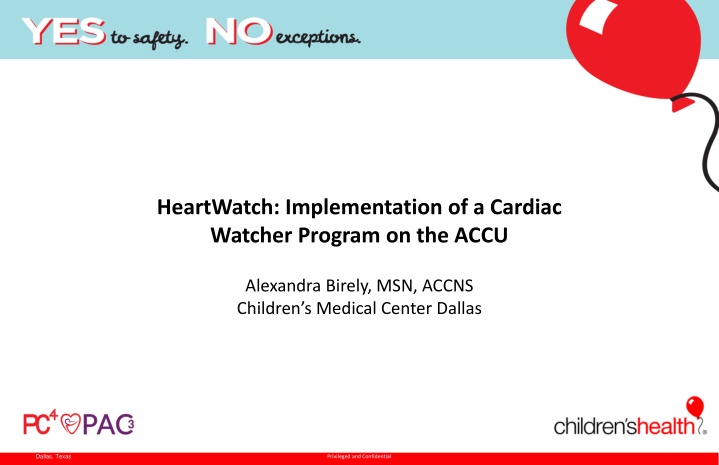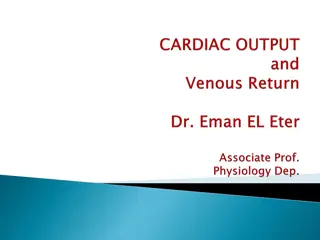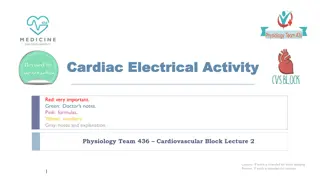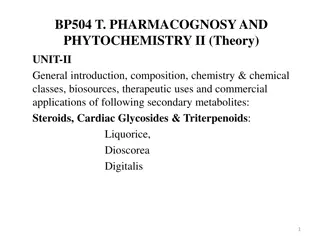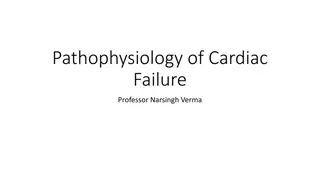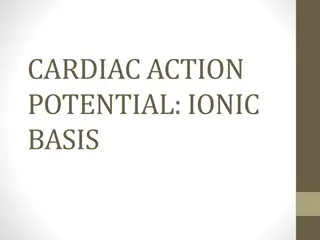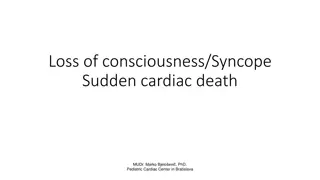Implementation of Cardiac Watcher Program in CMC Dallas
Twofold increase in sudden cardiac arrests on the ACCU prompted the implementation of the Cardiac Watcher Program in Children's Medical Center, Dallas. The program aims to decrease cardiac arrests by improving patient identification and creating a shared mental model among team members. Developed patient criteria and interventions have shown promising results, with a 16% reduction in the cardiac arrest rate. Minimal workflow disruption was observed, with enhanced awareness of high-risk patients reported by staff. Ongoing evaluation and staff coaching are planned for the future.
Download Presentation

Please find below an Image/Link to download the presentation.
The content on the website is provided AS IS for your information and personal use only. It may not be sold, licensed, or shared on other websites without obtaining consent from the author.If you encounter any issues during the download, it is possible that the publisher has removed the file from their server.
You are allowed to download the files provided on this website for personal or commercial use, subject to the condition that they are used lawfully. All files are the property of their respective owners.
The content on the website is provided AS IS for your information and personal use only. It may not be sold, licensed, or shared on other websites without obtaining consent from the author.
E N D
Presentation Transcript
HeartWatch: Implementation of a Cardiac Watcher Program on the ACCU Alexandra Birely, MSN, ACCNS Children s Medical Center Dallas Dallas, Texas Privileged and Confidential
Background Twofold increase in sudden cardiac arrests on the Acute Care Cardiology Unit (ACCU) at CMC since 2017 rate of 0.7 per 1000 patient days PAC3 aggregate rate: 0.18% of ACCU encounters CMC rate: 0.24% of ACCU encounters Pediatric codes outside of ICU likely associated with increased morbidity and mortality versus cardiac arrests occurring in more high-resource environments PC4 Cardiac Arrest Prevention (CAP) bundle demonstrates promising results in cardiac arrest reduction in CICU multidisciplinary huddles improve outcomes for high-risk patients Dallas, Texas Privileged and Confidential 2
Aims Decrease cardiac arrests on the ACCU by: improving identification of high-risk patients creating a shared mental model amongst team members Dallas, Texas Privileged and Confidential 3
Methods Developed patient criteria: in-depth review of recent cardiac arrests and emergent ICU transfers to identify high-risk patient characteristics Established interventions: a care bundle for patients identified as high-risk daily huddle sheet magnet outside patient room option to lower nurse/patient ratio and increase vital sign frequency Dallas, Texas Privileged and Confidential 4
Dallas, Texas Privileged and Confidential 5
Current rate through October 2020: 0.59 Dallas, Texas Privileged and Confidential 6
Results Pilot phase: March 2020-August 2020 43 ACCU encounters flagged as high-risk 0 cardiac arrests Formal rollout (phase II): September 2020-present 41 encounters flagged as high-risk 7 transfers to ICU for intervention 1 cardiac arrest, no longer met HeartWatch criteria at time of arrest Current rate: 0.59/1000 patient days 16% reduction in cardiac arrest rate Dallas, Texas Privileged and Confidential 7
Conclusions & Next Steps Minimal workflow disruption with addition of safety huddles Enhanced awareness of high-risk patients reported by nurses and residents Varying levels of comfort reviewing huddle sheet with parents present on rounds Next Steps: Ongoing evaluation of inclusion criteria & timeframes Coach staff in facilitating huddles Family education Standardization of bundle/action plan (diagnosis specific) Audits of process measures Dallas, Texas Privileged and Confidential 8
Acknowledgements Special Thanks to: Elysia Harshman BSN, CPN, Kathy Harris RN, BSN, Lori Ormiston RN, BSN Andrea Torzone APRN, CPNP, CNS, Anna Jones APRN, CPNP, Taylor Morse APRN, CPNP Ryan Butts MD, Matt Lemler MD, Josh Wolovits MD, Olivia Hoffman MD, Chioma Duru MD, Ravi Vamsee MD Dallas, Texas Privileged and Confidential 9
